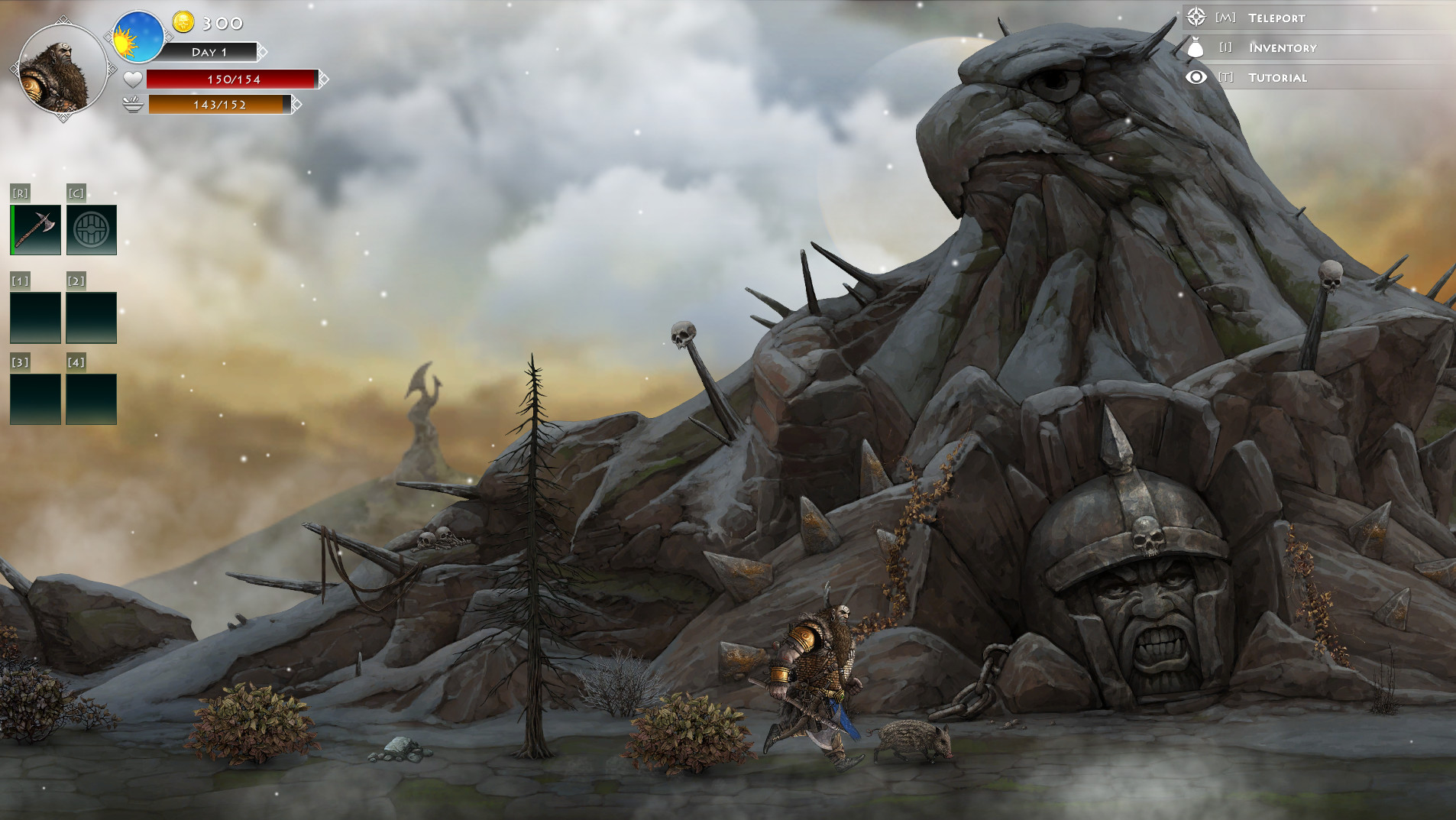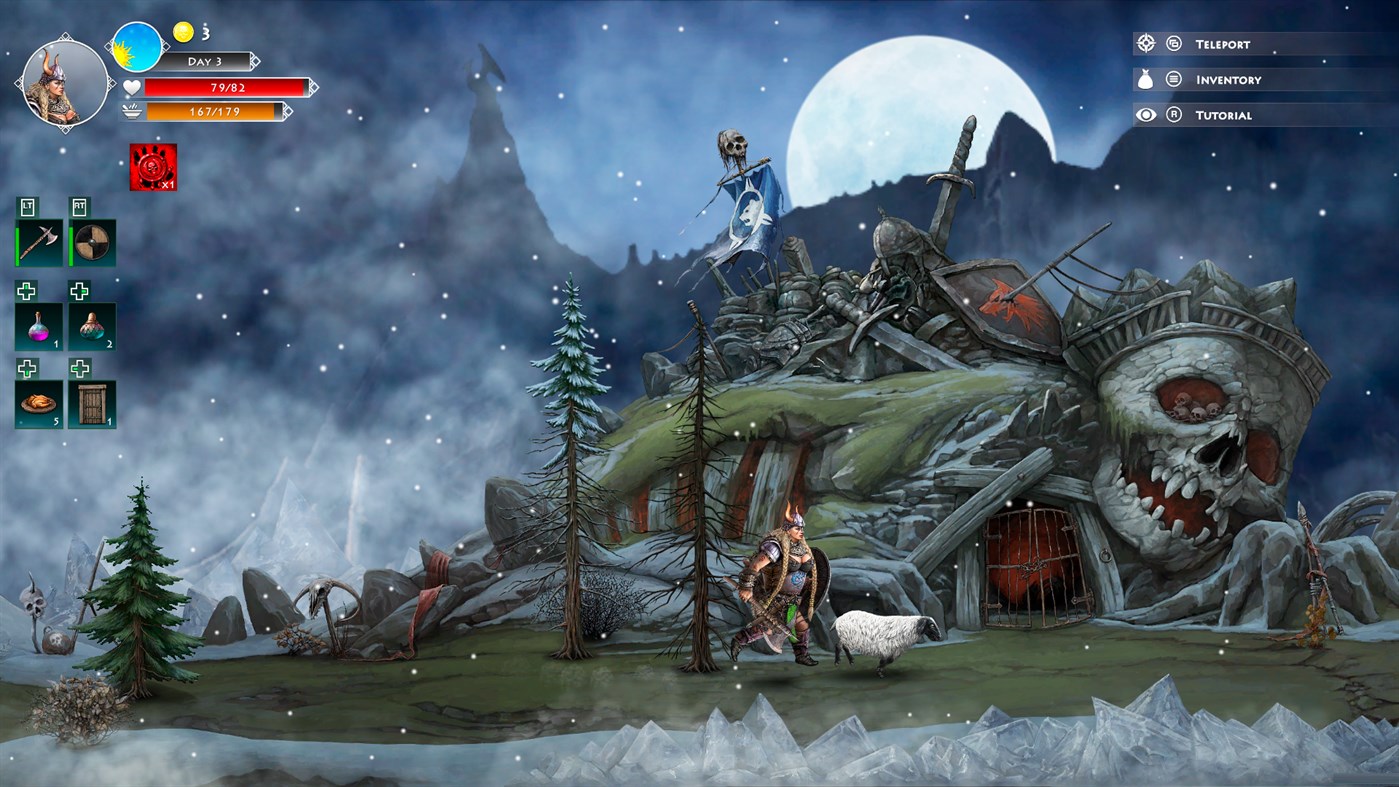Right from the beginning, I appreciated the fact Niffelheim dropped me in with the barest amount of direction at all. There is a tutorial codex which I could use to read about various aspect of the game, but it didn’t explain everything. I’m going to try and preserve this experience in this review as much as possible because a big part of the gameplay is figuring out exactly how everything works and what you need to do. If you are the type of gamer who likes to have everything laid out from the beginning, then this won’t be a good game for you.
There are four different classes to choose from: Viking, Shaman, Valkyrie, and Berserker. Each class offers a diverse mix of stat balance and damage, but for the most part, the gameplay doesn’t feel widely different between them. There did seem to be some difference in how much damage each could take and how long each could go without food, but it only seemed to make a difference early in the game. As I progressed and upgraded my gear, these differences appeared to matter less.

The general gameplay loop is to wander out and gather items to craft other things and make yourself stronger to face the challenges ahead. It’s a common survival type of gameplay. While it can get a bit repetitive, it also was fun when I’d stumble on the one thing I had been looking for so I could upgrading my crafting stations. I luckily had chosen to build the sawmill early on, which seemed like the right choice because items that could be crafted with it feed into the other crafts well. However, getting each station up to at least essential operation quickly is important to progress through the game.
In addition to building crafting stations and upgrading my gear, I quickly learned it’s imperative to upgrade my castle as well. Throughout Niffelheim, there are different points where enemies will attack the castle, which served as my home base throughout the game. The more the castle is upgraded the more difficult it is for them to enter and pillage. I do literally mean pillage. There are chests inside the castle, which can be used for storage, but these also can be looted by attacking enemies. There is also a vault which seemed like it was impervious to attacks, so I tried to store all of my most important things there. Of course, space in the vault is limited, so I couldn’t just keep everything in there.
The one aspect of Niffelheim I found frustrating is the combat. It’s a reasonably simple system where there’s one button to attack and one to defend, so there’s no complexity to it all. The simplicity of the combat would probably have been fine if there had also been a way to target specific things I wanted to attack. For example, let’s say I wanted to kill a chicken for some meat, but there was also a hedgehog running around. I’d generally have to attack blindly and usually would end up killing both. Not the end of the world, but frustrating. This situation was even worse when a horde of skeletons was attacking me. It was quite challenging to focus them one at a time, which led to a few deaths.

Speaking of death, it’s handled in a way that is punitive but not overly so. After dying, I would have to run back to my body to rez. This was easy even when I died in a dungeon because my body was just teleported to the entrance. I also didn’t lose any of my stuff after dying. The one big downside of death is every time I died, I would get a stacking debuff, which lowered my stats. For the most part having one or two stacks was no big deal, as long as I wasn’t planning to fight a boss or something. The only way to clear these stats is by drinking a potion of regeneration, which I never seemed to have many of. On the upside, one potion would remove multiple stacks, which is also why I didn’t particularly worry about removing the stacks asap.
Overall, Niffelheim is a gorgeous and challenging survival game, as long as you don’t want the challenge to come from an in-depth combat system.
7/10


